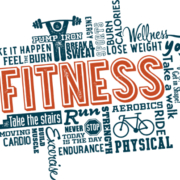What Is The Difference Between Anaerobic & Aerobic Exercise
Exercise is an important part of good health. It can help with weight loss and plays a crucial role in preventing many chronic health conditions like hypertension, diabetes, and heart disease. Regular exercise has also been shown to help with depression and anxiety. There is just something about getting your body moving and your blood pumping. It is what nature intended; as humans, we are supposed to be active. The more active you are, the better you will look and feel – and the healthier you will be.
There are many different types of exercise out there, though. It seems that everyone has “system” or some slick, branded fitness routine that is guaranteed to work. The thing is, the old-fashioned way is best. Cardio, the type of exercise that raises your heartrate and gets your blood pumping is actually categorized by aerobic and anaerobic. Understanding the similarities and differences will help you round out your workout for better results.
What is Aerobic Exercise?
Aerobic exercise involves low to high intensity physical exercise. The movements are oxygen infused, relying on the oxygen to meet the demands of the activity. Typically, exercises that are light to moderate intensity fall under aerobic:
- Walking
- Cycling
- Swimming
- Rowing
- Jogging
- Running
These activities can be performed for longer. In fact, many experts advise that an aerobic exercise workout is better when done for an extended period of time; at least 18 to 20 minutes. For instance, a person can walk on a treadmill for 20 to 30 minutes, then cycle for the same amount of time. This is sufficient for raising the heartrate and increasing metabolism.
Aerobic exercise was first introduced in the 1960s by doctor and Air Force Colonel, Kenneth Cooper. He created the Cooper Institute in 1970, which focused on preventive medicine, centered around education and research. The workout became very popular in the ‘70s and ‘80s as a class workout but over time has expanded to become a significant part of gym workouts all over the world.
What is Anaerobic Exercise?
Anaerobic exercise is high intensity physical exercise. Where aerobic builds endurance, anaerobic is more like a sprint, building power, speed and strength. It increases muscle mass and improves performance. It lasts from several seconds to around 2 minutes. Engaging in physical activity for longer than 2 minutes becomes more aerobic in nature. Types of anaerobic exercise include:
- Jump rope
- Cycling sprints
- Running sprints
- Swimming sprints
- Heavy weight training
Anaerobic activities are often interspersed with aerobic activities in interval training for maximum effect.
Levels of Intensity
Aerobic and anaerobic exercise can be combined to create a highly effective workout. It can involve increasing the intensity of an aerobic exercise, or it can mean changing from an aerobic activity to an anaerobic activity.
For instance, you may jog for five minutes, then sprint for two, and jog for five more minutes. Another option is to switch up the activities. Walk on a treadmill for seven minutes, do a cycle sprint for two minutes, row for seven minutes, and jump rope for two minutes. The combinations are endless and you can customize it for your favorite exercises or to accommodate physical limitations.
Health Benefits
Aerobic and anaerobic exercise have been shown to help prevent certain types of cancer, like breast cancer and colon cancer with just 30 to 60 minutes of moderate intensity exercise a day. Exercise has also been shown to prevent osteoporosis, diabetes, depression, cardiovascular disease, obesity, and it even improves cognitive function.
Find ways to incorporate some aerobic and anaerobic exercise into your fitness routine at least several times a week. It is how you get healthy, stay healthy, and feel better.
Visit www.ocwc.ca for more health, wellness and fitness tips!


